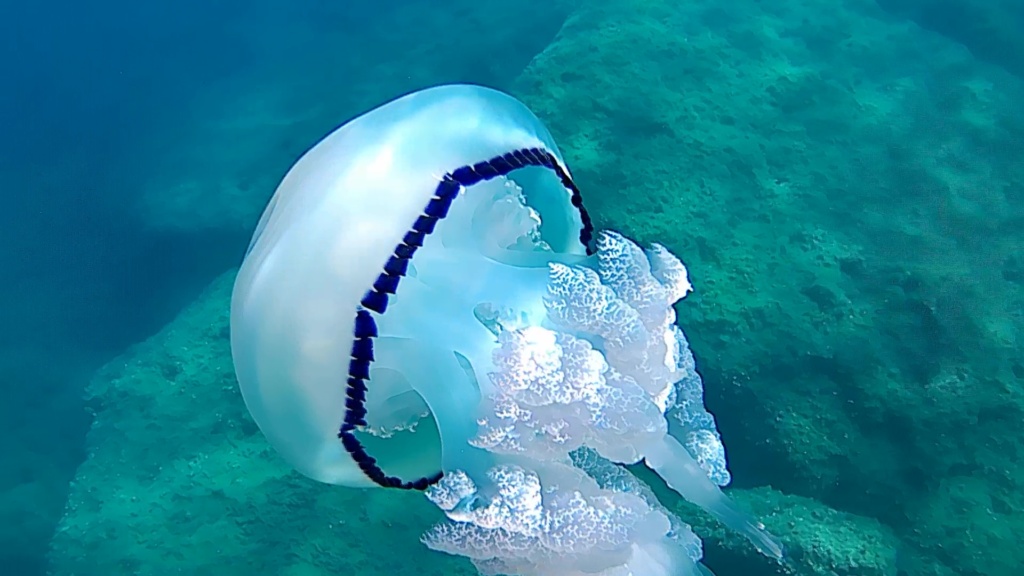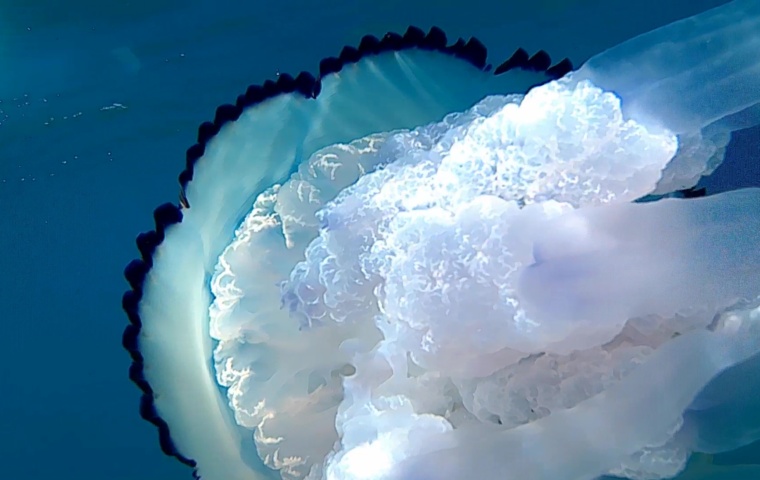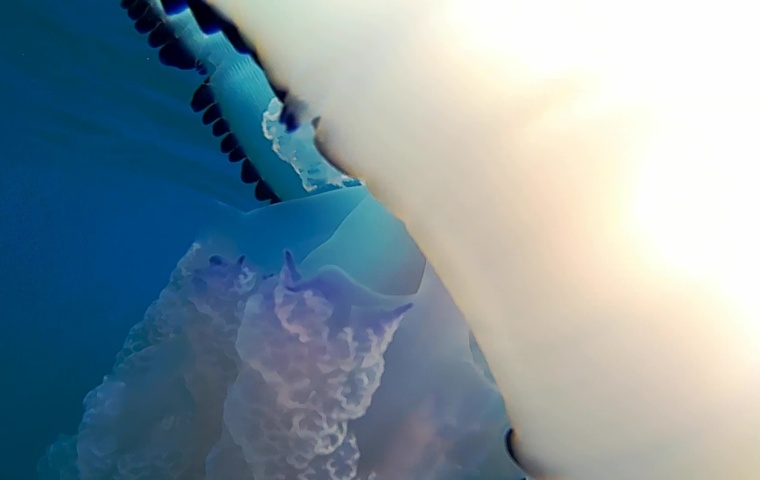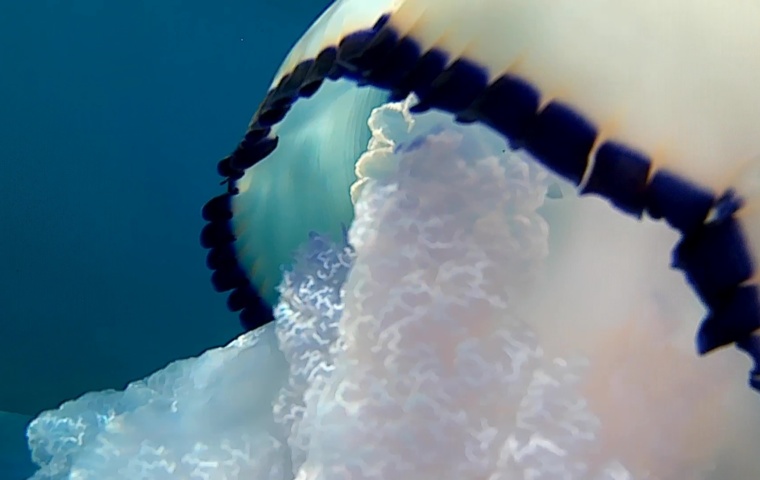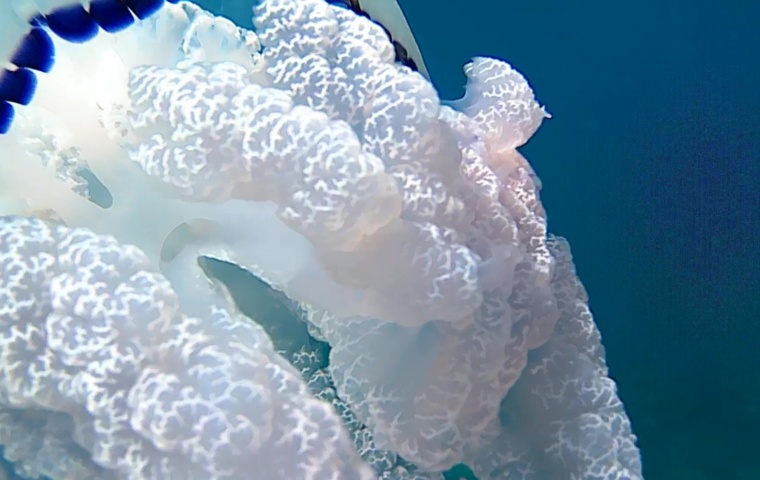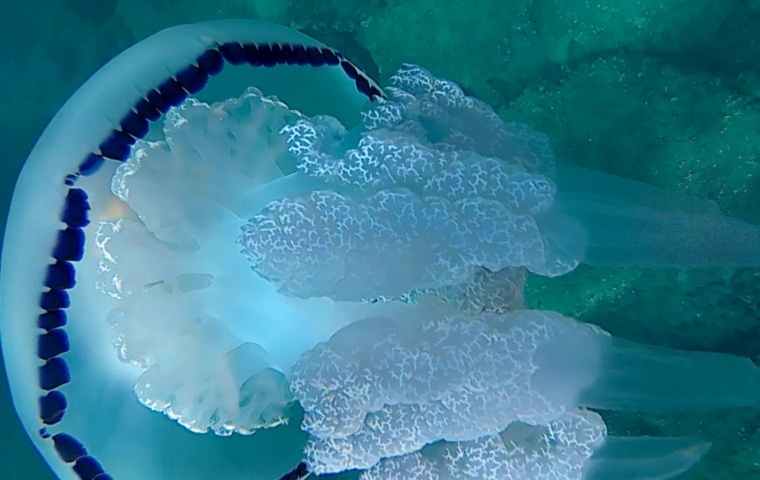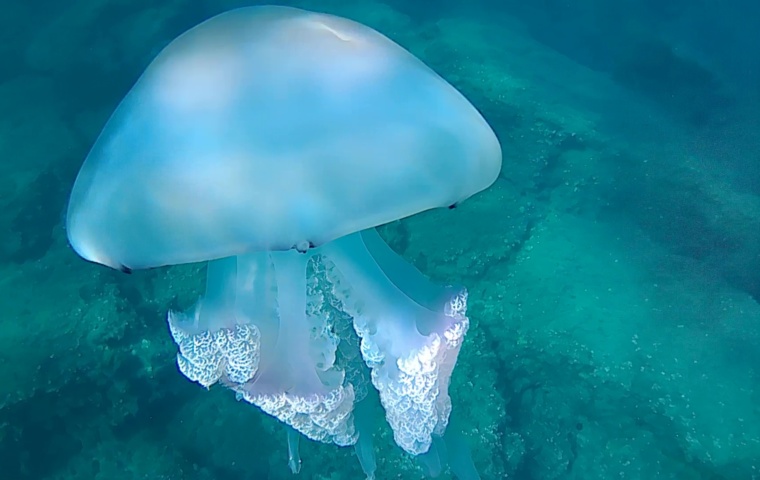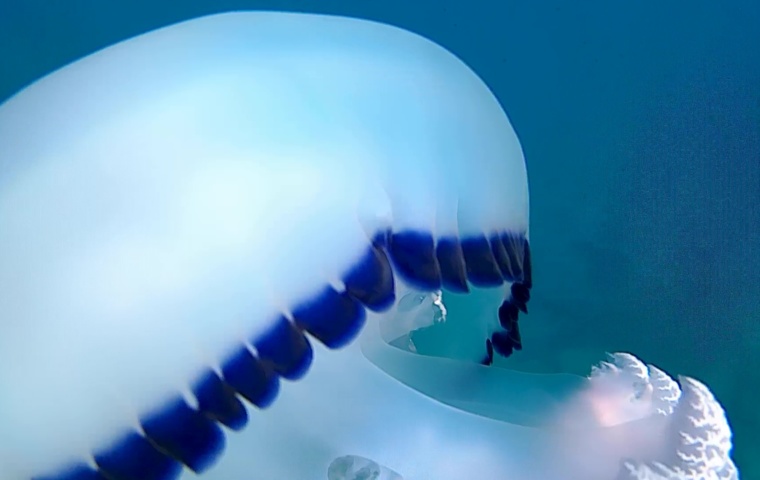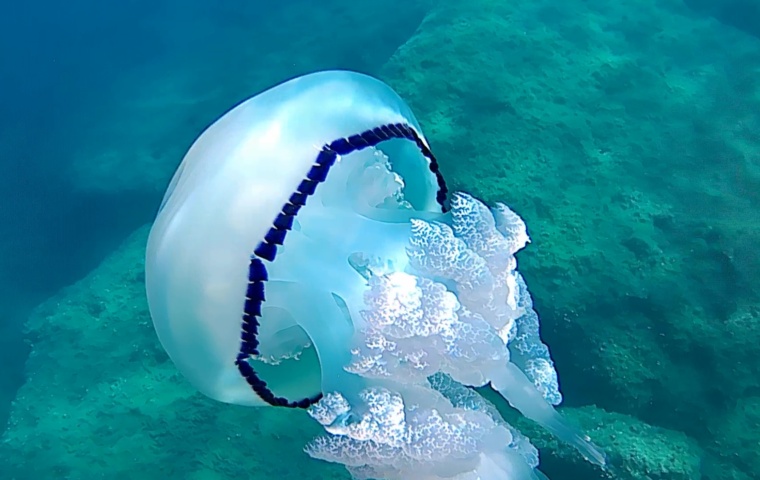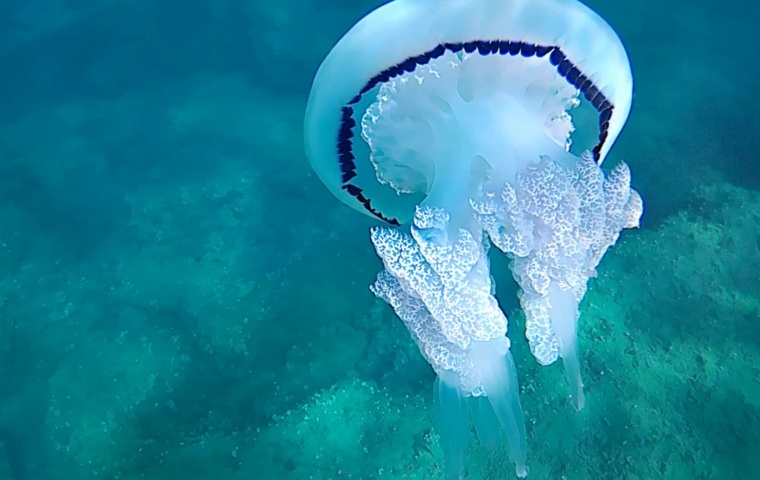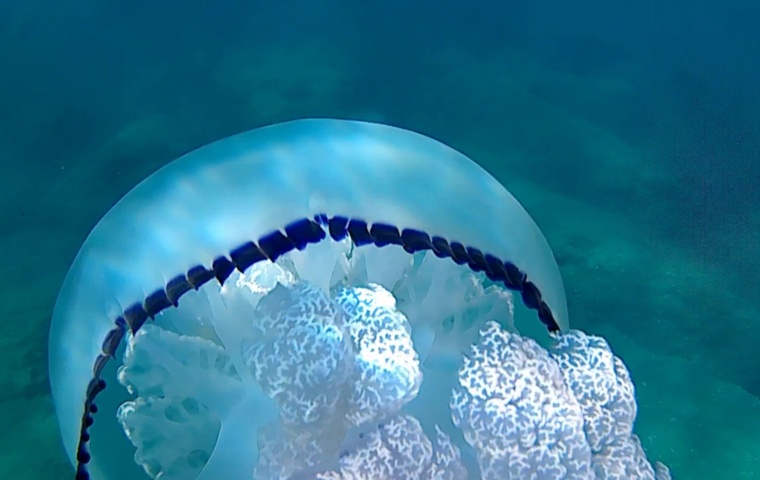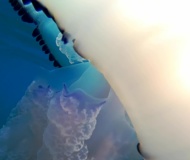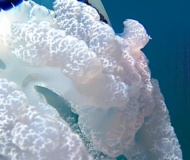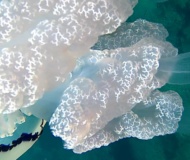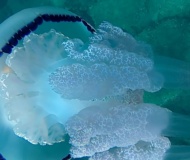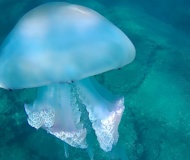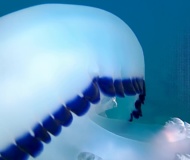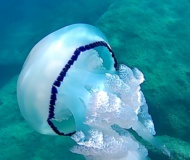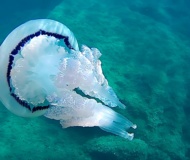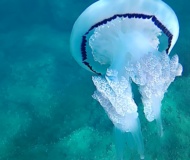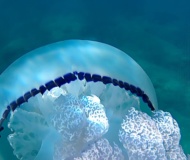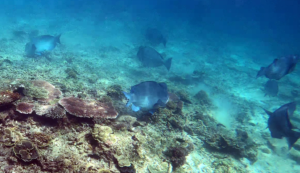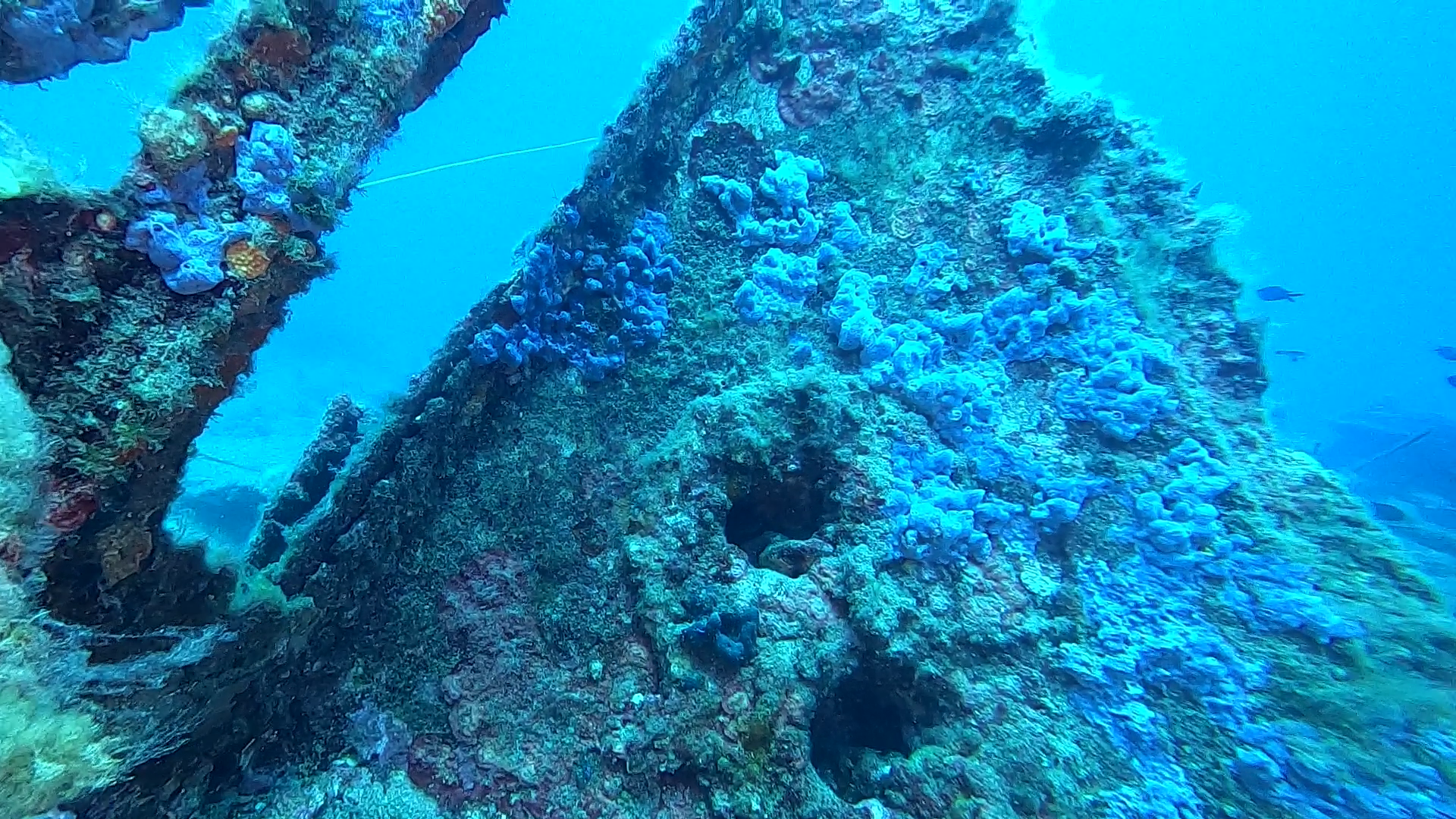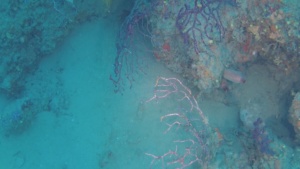Rhizostoma pulmo, commonly known as the Polmone di mare, the dustbin-lid jellyfish or the frilly-mouthed jellyfish, is a scyphomedusa in the family Rhizostomidae Rhizostomatidae. Polmone di Mare Rhizostoma pulmo intotheblue.it
It is found in the northeast Atlantic, and in the Mediterranean Sea, Black Sea, and Sea of Azov. It is also known from the southern Atlantic off the western South African coast and into False Bay.
It is common in the Irish Sea. It typically is up to 40 cm in diameter, but can exceptionally reach 90 cm, making it the largest jellyfish in British waters.
(exctract from Wikipedia)
Jellyfish are found all over the world, from surface waters to the deep sea. Scyphozoans (the “true jellyfish”) are exclusively marine, but some hydrozoans with a similar appearance live in freshwater. Large, often colorful, jellyfish are common in coastal zones worldwide. The medusae of most species are fast growing, mature within a few months and die soon after breeding, but the polyp stage, attached to the seabed, may be much more long-lived. Jellyfish have been in existence for at least 500 million years, and possibly 700 million years or more, making them the oldest multi-organ animal group.
Jellyfish are eaten by humans in certain cultures, being considered a delicacy in some Asian countries, where species in the Rhizostomae order are pressed and salted to remove excess water. They are also used in research, where the green fluorescent protein, used by some species to cause biolumunescence, has been adapted as a fluorescent marker for genes inserted into other cells or organisms. The stinging cells used by jellyfish to subdue their prey can also injure humans. Many thousands of swimmers are stung every year, with effects ranging from mild discomfort to serious injury or even death; small box jellyfish are responsible for many of these deaths. When conditions are favourable, jellyfish can form vast swarms. These can be responsible for damage to fishing gear by filling fishing nets, and sometimes clog the cooling systems of power and desalination plants which draw their water from the sea.
 English
English Italiano
Italiano
